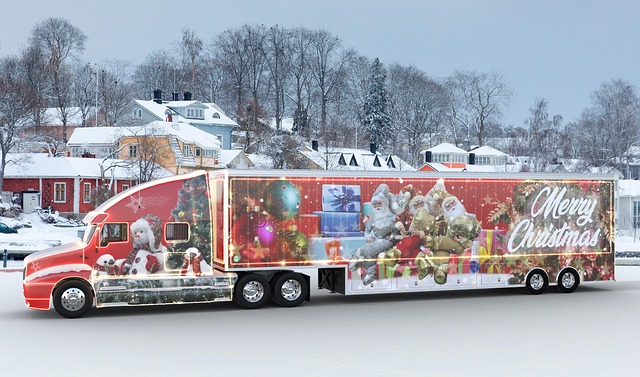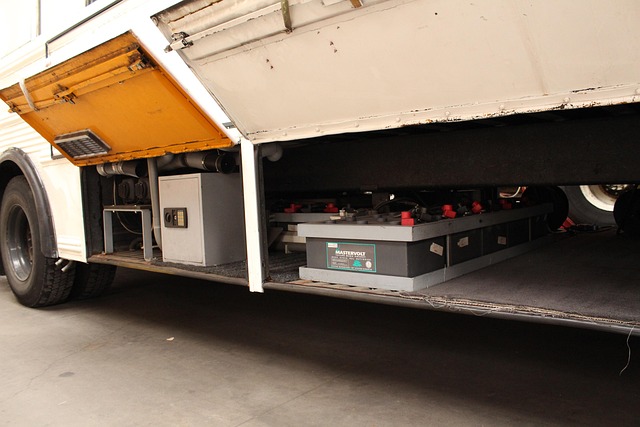Looking to register your car in California? This comprehensive guide breaks down the process step-by-step. From understanding essential requirements to preparing your vehicle, we cover it all. First, grasp California’s unique car registration rules. Next, gather vital documents for a seamless DMV VIN verification. Learn when and how to schedule this critical step. Then, get your vehicle ready for registration. Finally, submit the application and fees, making owning a car in California hassle-free.
- Understand California Car Registration Requirements
- Gather Necessary Documents for VIN Verification
- Schedule and Complete DMV VIN Verification
- Prepare Your Vehicle for Registration
- Submit Application and Pay Fees
Understand California Car Registration Requirements

Before registering your car in California, it’s crucial to understand the state’s specific requirements. The California Department of Motor Vehicles (DMV) mandates several key steps for car registration, including a thorough vehicle inspection and verification of your vehicle’s unique identification number (VIN). This VIN verification process ensures that your car meets safety and environmental standards before receiving official registration approval.
A mobile vin verifier can facilitate this critical step by offering convenient and accurate VIN inspections. These services allow you to quickly capture and transmit your vehicle’s VIN data, streamlining the initial registration process. By utilizing a mobile vin verification tool, you can save time and avoid potential delays associated with traditional DMV visits, making the car registration experience smoother for California residents.
Gather Necessary Documents for VIN Verification

Before you begin the registration process, it’s crucial to gather all the essential documents for a successful DMV VIN (Vehicle Identification Number) verification. This step is an integral part of the car registration procedure in California and ensures that your vehicle meets safety standards. For most vehicles, you’ll need your driver’s license or ID, proof of insurance, and the vehicle’s title, if applicable. The key document here is the Vehicle History Report, which can be obtained from a reputable source to prove that the car has not been reported stolen and hasn’t had any major accidents.
Additionally, consider having a mobile VIN verifier on hand for convenience. A mobile vin inspection service can quickly verify your vehicle’s history, saving you time and effort. This is especially beneficial if you’re purchasing a used car from a private seller, as it provides an extra layer of security to ensure the car’s authenticity. Having all these documents readily available will streamline the registration process at the DMV and help avoid any potential delays or complications.
Schedule and Complete DMV VIN Verification

After gathering your necessary documents and ensuring your vehicle meets all requirements for registration, it’s time to schedule and complete a DMV VIN (Vehicle Identification Number) verification. This step is crucial in the car registration process in California. You can conveniently schedule this inspection online or through a mobile vin verifier, making it easier than ever. During the vin inspection, a trained professional will verify the authenticity of your vehicle’s VIN and ensure it matches the information on record with the DMV.
This verification process helps maintain the integrity of California’s vehicle registration system. It also safeguards against fraud and ensures that all vehicles on the road are legally registered. Many mobile vin verifiers offer this service right at your location, saving you a trip to a DMV office. This added convenience is just another benefit when navigating the car registration process in California.
Prepare Your Vehicle for Registration

Before you can register your car in California, it’s crucial to prepare your vehicle for the process. This involves completing several essential checks and ensuring all necessary documents are in order. Start by performing a thorough vin inspection to verify the vehicle identification number (VIN). You can do this using a mobile vin verifier or even through a simple online tool offered by the DMV.
A key part of the preparation is ensuring your car meets all safety standards set by the state, including emissions and safety feature requirements. Make sure all lights, signals, brakes, and other critical components are functioning properly. Additionally, ensure that any necessary repairs have been made to pass a potential smog test, which is often required for vehicle registration in California.
Submit Application and Pay Fees

To complete the registration process, the next step is to submit your application and fees. This involves filling out a Vehicle Registration Application form, which can be obtained online or in person from the California Department of Motor Vehicles (DMV). Ensure all information is accurate, including the Vehicle Identification Number (VIN), as the DMV conducts a VIN verification to validate ownership and prevent fraud.
When submitting your application, you’ll also need to pay the registration fees. These fees vary based on the type of vehicle and its age. You can choose to pay online or at a local DMV office using various payment methods. After successful submission and payment, you’ll receive your registration documents, and your car will officially be registered in California. Don’t forget that some regions may also require additional fees for a mobile VIN verifier or vin inspection during the registration process.
Registering a car in California involves several steps, from understanding the state’s requirements to submitting the necessary documents. Ensure you gather all needed paperwork, including a valid title and identification. After scheduling and completing the DMV’s VIN verification process, prepare your vehicle for registration by checking its status and ensuring it meets environmental standards. Finally, submit your application and fees to officially register your car in California, making it legal to drive on public roads.
